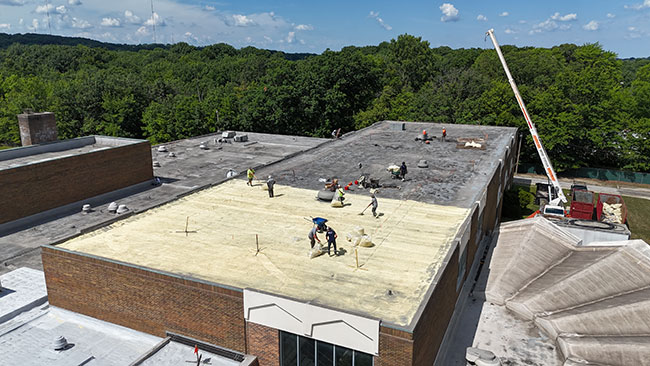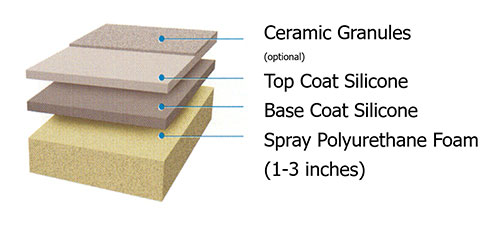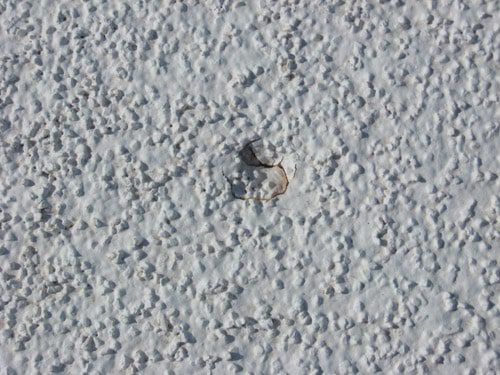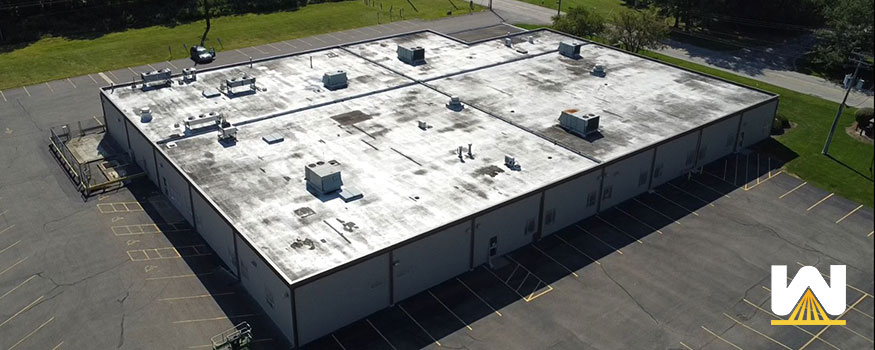Quick Summary: If you have an older spray foam roof, it’s possible it can be recoated with an elastomeric coating. Automatically assuming you need a complete tear-off can be a costly, unnecessary mistake.
Real-world scenario:
West Roofing Systems traveled to Chicago to look at a roofing project. It was an old TPO roof that was leaking, and they were looking for solutions.
The owner wanted to tear off these “other” spray foam roofs. The project manager went onto the roofs and determined that they were spray polyurethane foam, approximately 15 years old, and great candidates for a recoat.
When we explained the recoat process, the owner had no idea that was an option.
They thought their only choice was to remove the foam system and install something else entirely.

What is the spray foam roofing system?
We explained to the owner that the spray foam roofing system is usually four parts:

The system is designed so that the coating will naturally wear away due to foot traffic, weather, or any other natural event.
The combined thickness of the base and top coating determines the warranty length. In most cases, a:
- 20 mil thickness grants a 10-year-warranty
- 25 mil thickness grants a 15-year-warranty
- 30 mil thickness grants a 20-year-warranty
What is the recoat process?
Say you installed a spray foam roof and received a 15-year warranty. A 15-year warranty means that a 25-mil coating was installed.
By year 15, the 25 mils have probably worn down significantly.
A spray foam roofing contractor will inspect the roof, make any necessary repairs, clean the roof, and install a new 25-mil thickness of coating.
A new 15-year Full-System, NDL, NPR warranty would be granted.
This process can be repeated indefinitely.
Are there cases when a spray foam roof cannot be recoated?
Yes. There are several, but these are the main two:
Case #1 – Neglection
If the foam roof has been neglected during and past the warranty, it most likely will not be eligible for a recoat.
Say the roof had a 20-year warranty, and 30 mils of coating was installed. If a contractor is called 25 years after the roof was installed, it’s too late.
This is because all the coating has worn away, and the foam has been exposed to UV rays. Unprotected foam will begin to degrade within 72 hours.
Case #2 – No routine maintenance
Say the foam roof had a 10-year warranty. Maybe the owner kept up with annual maintenance the first few years, began to think that because there were no leaks, it was a waste of money, and canceled the maintenance contract.
Then, shortly after, something happens that damages the roof:
- Hail storm occurs
- The HVAC guy jams a panel into the roof
- Another maintenance person drops a screw or nail, and it’s stepped on
- A sharp branch punctures the roof

Any of these can penetrate the coating and expose the foam. With routine maintenance, these minor repairs can easily be sealed with caulk or coating with no permanent damage, and the roof will perform normally.
If the foam is exposed for too long, it’ll degrade (most likely being burnt by UV rays). This foam will need to be removed before other repairs can occur.
When one area of foam is exposed, many other areas of foam are likely exposed as well.
When the roof is in bad shape, it will not meet the eligibility requirements for a recoat.
Conclusion
If you have a spray foam roof and are unsure what to do, contact a few different contractors and see what their solutions are.
If they recommend a complete tear-off, ask them why.
And if they’ve never heard of a recoat, you know that contractor isn’t right.
Want to learn more? Here are some articles you might find helpful:

